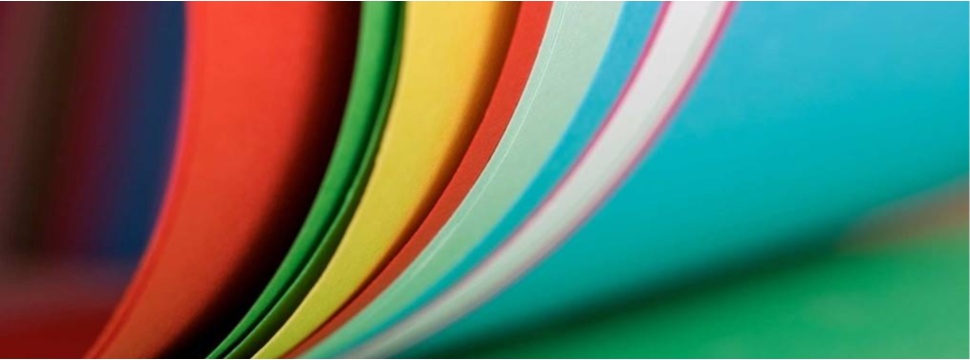Expanding the Palette: Fresh Portfolio of Colorants Helps Solenis Grow in Papermaking Chemical Market
News General news
When Solenis joined forces with BASF’s paper wet-end and water chemicals business in 2019, it paved the way for an extended offering to the global papermaking industry.

Today, Solenis is effectively leveraging its newly expanded palette with a full range of basic dyes, direct dyes, pigment preparations and color developers for thermal paper.
After serving the pulp and paper industry for more than 100 years, Solenis is well known as a leading supplier of process and functional chemistries. The Wilmington, Delaware-based company already had a world-class portfolio of products, state-of-the-art monitoring and control systems and a global network of professionals respected for their consultative approach to working with customers.
Meanwhile, the Germany-based BASF had built its reputation as an innovative chemical company, and its 2008 acquisition of CIBA expanded its colorants portfolio and expertise even more, establishing BASF as the go-to reference in the market.
But every great team can be improved. For Solenis, which did not count colorants expertise as a core competency, the pickup of BASF’s basic dyes, direct dyes and pigment preparations was a key addition that strengthened an already robust portfolio. Now, Solenis has fully assimilated the acquired technologies and is well positioned to offer a colorants portfolio that gives papermakers great flexibility, along with support from a technical team.
As Solenis CEO John Panichella observed when the deal was signed, “Together, we have a unique opportunity to create a customer-focused global specialty chemical company with an enhanced focus and expanded offerings.”
Colorants are an important part of that offering.
A Full Spectrum of Solutions
Modern papermakers face enormous challenges. Their customers are becoming increasingly demanding as they clamor for a wide range of special effects, from colors and lightfastness to handling properties and custom formulations. Engaging different vendors to build a complete range of colorant products, in addition to all of the other wet-end chemistries, takes valuable time and energy that most paper mill personnel can’t spare. They would much prefer a supplier that offers a comprehensive solution, as well as the technical expertise to support it.
“There has been a lot of upheaval in the colorant supplier world,” says Christophe Zebst, Global Marketing Director, Industrial Packaging and Graphics & Specialty Papers, Solenis. “Papermakers want selection, but they also want stability and strength. Because of our track record serving the industry, our customers can feel confident that we’ll be there to support them, no matter their size or location. And, of course, we’re really pleased to offer a world-class portfolio of colorants.”
The Solenis portfolio is organized into three broad categories:
- Liquid and powder direct dyes, which comprise both powder and liquid concentrate products. These direct dyes, which are labeled under Solenis’ PergasolTM trade name, are anionic, water-soluble synthetic dyes known for their ability to achieve precise shade and quality targets. The dye group is ideal for providing deep, lasting color in printing and writing papers, graphic and specialty papers, hygiene papers, paper board, corrugated case materials, and decorative tissue paper grades. Solenis also offers some cationic direct dyes that have very higher fiber affinity, providing outstanding bleedfastness to many paper grades.
- Organic and inorganic pigments, which Solenis markets as PergaliteTM in Europe, Asia Pacific and Latin America and as SolarTM in North America. These pigment preparations are an excellent choice for tinting white paper and for producing high-quality colored paper. They are also an excellent option for producing medium and deep colored paper grades, where lightfastness and chemical resistance are needed. Notably, Solenis offers a unique range of pigment preparations for paper and board intended to come into contact with food.
- Basic dyes, which encompass Solenis’ PergabaseTM family of synthetic dyes. These colorants are well studied and allow papermakers to economically achieve brilliant shades of violet, brown, yellow, orange and red. They are ideally suited for tinting newsprint and wood-containing papers and for coloring waste-based packaging grades.
According to Zebst, it’s the versatility of the Solenis portfolio that is so attractive. “Our colorant products have been designed to provide a wide spectrum of colors that can be used to enhance just about any paper, tissue or board grade. Our team of papermaking and color experts work closely with each mill to design a program that functions properly in their operational environment, yet still allows them to meet quality, regulatory and shade requirements.”
Those requirements can vary greatly depending on the papermaking market. For example, tissue and towel makers must balance whiteness with wet strength, while deep-dyed napkins for food contact must provide excellent bleedfastness. Packaging and board makers must also be able to provide solutions for food contact, as well as other specialty packaging products such as pharmaceuticals, cosmetics and detergents, all of which must prevent water and vapor intrusion without sacrificing recyclability. Finally, printing and writing paper makers must be able to deliver brightness and whiteness, printability and runnability, gloss and smoothness, uniformity and strength.
In addition to these requirements, navigating the regulatory environment can be daunting. Since the Food Additives Amendment of 1958 was passed in the United States, a number of twists and turns have occurred that affect the use of colorants in food packaging, in polymers and in paper and paperboard. Similar challenges have affected EMEA, where BASF already forged a reputation as a leader in product safety and regulatory (PS&R) initiatives. Over the decades, BASF has obtained certifications with the Nordic Swan Ecolabel within different paper product groups, has developed a number of technologies with clean ecotox profiles and continues to extend its search for sustainable and renewable raw materials throughout the supply chain.
All of that regulatory expertise is now rolled up into the Solenis brand — and available to Solenis customers. In fact, having a color expert that understands and can help interpret regulations in multiple countries around the world is an essential part of a colorant solution.
As Zebst says, “There is an expression in the industry: color is easy — until it isn’t. That’s why it’s critical for papermakers to find a supplier who can solve problems and simplify their operations.”
A Problem-Solving Partner
Applying color to paper products can be an intricate process marked by a lot of decisions. Dye or pigment dispersion? Anionic or cationic? Liquid or powder? Batchwise, continuous or split dyeing? Paper mills need a supplier that can help answer critical questions, not just supply chemicals. Responsive technical support is essential to maintaining quality products and cost-effective operations.
Solenis’ field and laboratory capabilities include application expertise, color matching services, diagnostic expertise and laboratory analysis. Monitoring and control offerings — such as automated colorant feed and control systems, data management services and inventory monitoring services — help the process run smoothly once in place.
Education is an important element of a Solenis solution, which is why the company provides colorant technical training both internally and to its customers. According to Dwight Pakan, North American Colorant Portfolio Manager, “Offering short, focused training to shift operators in a mill setting so they can handle day-to-day issues can lead to significant improvements in productivity.” Solenis also offers weeklong training that includes both classroom and hands-on color matching at the Solenis Colorant Laboratories. “It allows us to train and build the foundation for the next generation of colorant experts.”
The Next Generation of Color Developer
Solenis embraces a culture of innovation across the organization, and this is particularly evident in the area of colorants. “We have an extensive R&D organization,” Zebst points out, “so we are able to drive the industry forward by introducing new technologies that address unmet needs or satisfy specialized color requirements, which could be requirements for eco-friendliness, food-grade compatibility or security. We regularly work with customers to produce solutions tailored to their unique needs for printing and writing, newsprint, tissue, paperboard and specialty grades of paper.”
A great example of this is the recent introduction of Solenis’ next-generation PergafastTM 425 color developer for the thermal paper market. PergafastTM 425 builds on the success of PergafastTM 201 color developer, which supported customers when the ban on BPA (bisphenol A) was enforced in Europe. With PergafastTM 425, papermakers will gain access to improved performance as well as an improved ecotox profile, positioning them to respond to future thermal market requirements.
Solenis also draws heavily on the 150 years of colorant technical know-how that came with the BASF integration to produce the specialized raw materials and intermediates used in colorant synthesis. “The knowledge and experience to synthesize the building blocks for colorants gives Solenis the option of producing these components if they become difficult to source in the future,” observes Pakan. “The ability to extend backward integration offers significant flexibility for production and procurement teams and is becoming more important in the current global supply environment.”
Innovation isn’t limited to colorant chemistry. Experts at Solenis are also helping customers to control their inventory and reduce costs. For example, the company offers a closed-loop color control system that can calculate the exact flow rate of a specific colorant to match target L*, a*, b* and D65 brightness measurements as closely as possible. This results in better shade control quality, quick shade change time, and less downtime due to shade changes — all of which can reduce total production costs.
For papermakers looking for specialty chemical suppliers that supply more than chemicals, this is a win-win scenario. Working with a partner like Solenis, they can enjoy immediate benefits from a world-class portfolio of products and a team of people to support them, yet they can also look forward to innovations that will help them stay competitive and profitable in the future.










